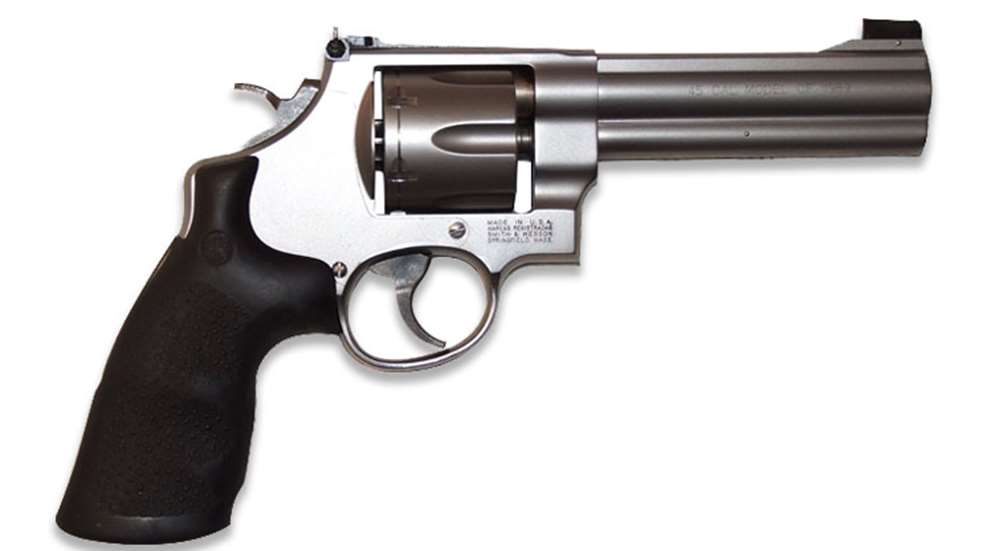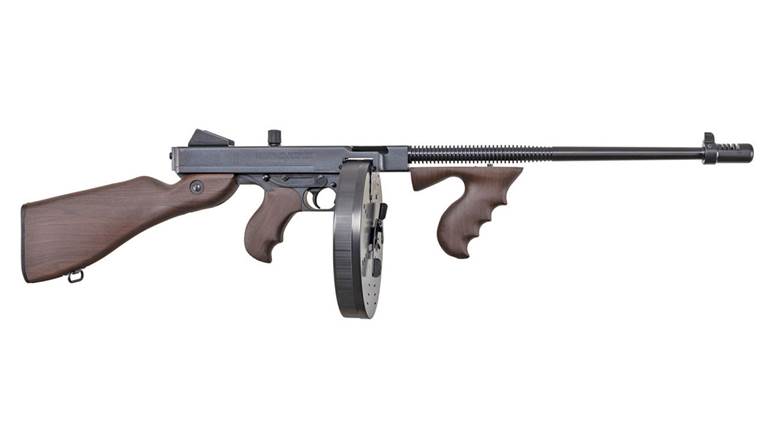
While I started my love affair with the handgun (in the form of a GI .45 Colt auto), I was always open-minded about the revolver. In match shooting, the Marine Corps used revolvers for the center-fire stages, so I developed some familiarity with the S&W K-38 and Colt OMM. A little later, I got into the law enforcin' business and it was all revolver. With my agency, Colts were permitted but S&Ws were issued. With a few exceptions, we carried medium-frame .38s from S&W—10s, 15s or 19s. A few guys liked the better shooting qualities of a heavier gun and opted for 27s or 28s I packed a 5” Model 27 for a couple of months and liked it very much. But when I shot it side by side with my 19 and saw little difference with our issued ammunition, I went back to the lighter K frame. Most police officers preferred a revolver that was light enough to ride their hip virtually unnoticed for long shifts and I am no exception. Eventually, I retired from law enforcement—it happened at the time when S&W and Ruger introduced the best police revolvers ever made. They were the Smith L frames and Ruger GP-100s. Since we are going to look at my second favorite revolver, we have to first eliminate my first, which is none of the ones I have already mentioned.
In the early stages of my revolver-carrying deputy-sheriff days, I realized that carrying an off-duty gun was a good idea. It should be small and light enough to always be there. Like many other officers, I went for the same brand of gun as my on-duty revolver—Smith & Wesson. This company's small, five-shot J-frame revolvers have been made since the 1950s and the very best of that sized gun is the internal hammer, double-action-only Centennial. The J-frames in general and the DAO Centennials in particular are probably the company's current best-selling revolvers. I have had one in my pocket for just about 40 years. The current choice, a .357 Mag. Model 340 PD, is lying on the back corner of my desk as this is written. It is unquestionably a gun that I have carried most and fired least, but it is still my all-time favorite revolver.
So what is my second choice in revolvers? Although the wheelgun's popularity is clearly declining, there are many fine makes and models from which to choose. Colt no longer makes gems like the Python and Cobra, but Smith & Wesson, Ruger and Taurus all have guns in small, medium and large sizes. Modern technology has now made it to the revolver and polymer guns are available in all three makes. But for my purposes, revolvers for personal use no longer need to be weight and size compromises, because I no longer need them for daily carry. Since I no longer go afield with a revolver for game, I really don't have much need for the big Magnums. Don't get me wrong—I have lots of all sizes of revolvers on hand for historical reference and ammo evaluation, but they're stored in the vault.
I am quite happily married to a lady who has small use for the many automatics that so demand a handgunner's attention these days. Nan is perfectly happy with the traditional revolver from Smith & Wesson and handles all of them well. We both like to have revolvers in several locations around the house, so it boils down to which guns we choose. They are home- and personal-defense guns that we don't carry, so size and weight are not really important. The big Magnums are generally excessive in recoil and muzzle blast. I strongly believe that defensive handgun calibers should produce large holes on target and the heavier bullet available in a given caliber is almost always better than the lighter one. Modest velocities (which equate to lower recoil) are entirely acceptable in this setting. In this line of reasoning, it would seem that the .44 Spl. is our gun of choice. The big 240-gr. bullets that are used in this century-old caliber look pretty good.
But I believe that another caliber would be a much better choice. Believe it or not, I like the .45 ACP cartridge for this application. For one thing, the ammunition has a proven record of performance over many years of use—literally a century of service. It is also made in great variety by many different companies. As far as guns are concerned, Smith & Wesson made its first .45 ACP revolvers when the Army didn't have enough autos in World War I. They made a great many Model 25s (1955 Targets) and a much smaller number of Model 26s (1950 Target Models). Both guns have target sights, but in modern times, they've offered several kinds of Model 22s, which have fixed sights. There have also been Nightguards and Governors. If you want to look, there are many S&W .45 ACP wheelguns to be had. I own a Model 26, cut back to four inches after rescue from oblivion. As a mate to it, I have a Model 625 Mountain Gun. With these two, I have done both the 250 and 350 pistol courses at Gunsite. At least two more custom guns are in the works. As you might gather, I have many reasons why the S&W .45 ACP wheelgun is my second favorite revolver. And, should you see this as product prejudice, I have a couple of Colt New Service .45s and continue to look for a Shooting Master.
Wikipedia image




































